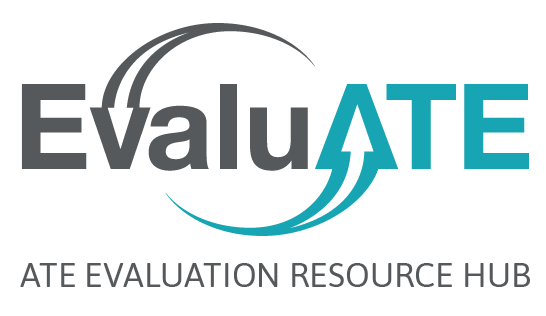
The logistics of planning and facilitating a virtual event are different from in-person event logistics, but by no means less involved. And, done right, virtual events can be more inclusive, productive, and cost-effective than in-person ones, so we want to share some lessons learned from a three-day event that EvaluATE hosted in May 2023.
The inaugural ATE Evaluation Summit involved 25 ATE principal investigators (PIs), evaluators, and National Science Foundation (NSF) program officers. Here are some of the lessons we learned.
- Embrace structure. Clearly communicate daily goals and share a detailed agenda. Each of our event’s three days was structured around a particular theme, which was written on the agenda and shown on a slide at the beginning of the day. The first day, we explored participants’ experiences and understanding of what ATE evaluation currently looks like; the second day was structured around what ATE evaluation should look like. This structure facilitated planning and decision-making and helped focus conversations without being disruptive or limiting the generation of ideas.
- Also embrace adaptability. Things won’t always go as planned, and that’s okay! After each event day, we met internally to discuss questions that emerged and to resolve issues. Our agenda guided the timing and implementation of each day’s activities, but it was also important to respond to emerging needs. In response to discussions, we reassessed the focus and timing of some remaining activities, and we ultimately addressed some topics in greater depth after the event.
- Account for the various roles participants may represent. Our event intentionally sampled individuals representing different roles and responsibilities within ATE. We invited a mix of evaluators, PIs, and NSF program officers. We didn’t expect some attendees to lean into their previous experience rather than their current ATE role; for example, one evaluator spoke mainly from the perspective of their prior experience as an ATE PI. If your event uses a purposeful sampling strategy as ours did, consider participants’ prior experience with your event’s topic(s) or purpose(s).
- Keep it interactive. Offer multiple ways for participants to engage in conversations. For us, this meant assigning pre-work (reflecting on a report by completing an online form with open-ended questions) and offering a mix of small- and large-group discussions and activities each day. We also let people share ideas and questions through the chat feature and through a virtual whiteboard. We used Miro for small groups to document their discussions and share back with the larger group. We found these activities tremendously helpful!
- Be creative. Find fun and unexpected ways to keep participants engaged and document the event. We had a graphic facilitator create and share daily visual notes that summarized the conversation. Opening or break activities could also integrate creativity.
Here are some resources we found helpful in planning our virtual event:
- The Definitive Guide to Facilitating Remote Workshops, by Mural
- Planning and Conducting Virtual Workshops, by Jan Noga (Part I, Part II, Part III)
- Icebreakers You Can Steal For a Better Meeting, by Jackie Colburn (and her follow-up post More Icebreakers You Can Steal for Better Meetings)

Except where noted, all content on this website is licensed under a Creative Commons Attribution-NonCommercial-ShareAlike 4.0 International License.






 EvaluATE is supported by the National Science Foundation under grant number 2332143. Any opinions, findings, and conclusions or recommendations expressed on this site are those of the authors and do not necessarily reflect the views of the National Science Foundation.
EvaluATE is supported by the National Science Foundation under grant number 2332143. Any opinions, findings, and conclusions or recommendations expressed on this site are those of the authors and do not necessarily reflect the views of the National Science Foundation.